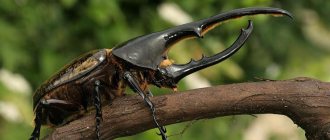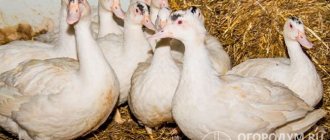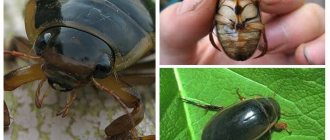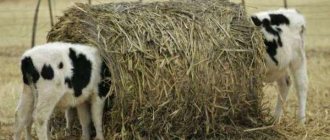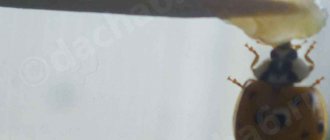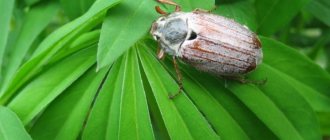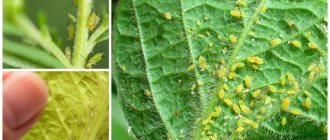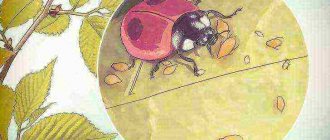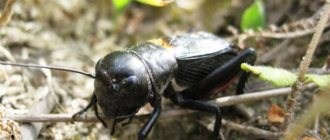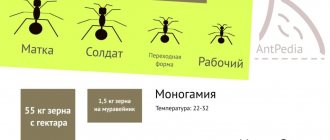The most numerous group of insects are beetles. At the moment, there are about 400 thousand species of beetles, differing in appearance, size, lifestyle, etc. An interesting representative of beetles is the Hercules beetle. It attracts attention with its impressive size, the Hercules beetle is the largest species of the genus Dynastes and one of the largest beetles in the world.
Hercules beetle (Dynastes hercules)
Origin of the species and description
Photo: Hercules beetle
Hercules is a coleopterous insect. It belongs to a very large family of lamellaridae. Today it numbers more than thirty thousand species and is replenished every year. Representatives of this species are widespread throughout the globe. The rhinoceros beetle, as it is often called, belongs to the subfamily of hollow beetles.
This subfamily has a striking distinctive feature - growths on the pronotum and head. For this reason, it is difficult to confuse such insects with anyone else. Due to specific growths, Hercules can reach seventeen centimeters in length.
Video: Hercules beetle
The Hercules beetle, among all insects, is famous for its incredible strength. It can carry and lift various objects whose weight is 850 times the weight of the insect itself. Hercules surprises with its size no less than with its strength. The male can reach seventeen centimeters, the female is smaller - about eighty millimeters.
During flight, the insect's wings open as much as twenty centimeters. Hercules can also be called a record holder in terms of weight. The weight of an adult can reach one hundred and eleven grams. This is a record figure among representatives of the lamellar species. Only the Goliath beetle can come close to this indicator. Very rarely a goliath weighs more than one hundred grams.
What are the primary features
The Hercules beetle is a representative of the lamellar beetle family. The insect is included in the genus Duplyakov. These individuals are the largest. They have characteristic growths on the head. Insects have a small head. The antennae are composed of 9 segments. At the end there is a mace. The genus includes 300 representatives. Related individuals of Hercules include:
- scarab;
- rhinoceros beetle;
- elephant beetle.
Males have a body size of up to 15 cm, less often - 18 cm. Females are smaller. The body is black and covered with red hairs. The front wings were transformed into dense elytra.
The color of an insect directly depends on environmental conditions, namely humidity. The main color is olive, brown or yellow. As an addition, there are dark spots of different sizes and locations.
The rhinoceros beetle is one of the related species
Some individuals may have a blue tint to the elytra. At the adult stage, the insect can instantly change color. This feature has interested many scientists. This ability is quite rare.
The hind wings of the insect did not atrophy. Hercules can withstand short distance flights. The beetle's legs are long. Thanks to this, the representative easily climbs trees and bushes. The front legs are digging.
The wingspan is 23 cm. Each insect weighs 100-110 grams. Beetles often have a matte surface.
Each beetle goes through 4 stages:
Read on topic:
Features of the life activity of ladybugs
14.11.2020
Description of chironomids and their possible danger to humans
14.11.2020
What do cutworms look like and what harm do they cause?
14.11.2020
What do goliath beetles look like and can they be bred at home?
14.11.2020
- egg;
- chrysalis;
- worm;
- adult beetle.
The larva is helpless. The caterpillar's enemies are ants, ground beetles, and centipedes. The most dangerous predator is the bat.
Caterpillars are often attacked by wasps. The insect stings the larva, thereby paralyzing it, and lays eggs on the body. The caterpillar is a delicacy for wild boars. The animal finds larvae in rotten trees.
This beetle has a rather large larva
Appearance and features
Photo: Hercules beetle Red Book
In terms of external qualities, the Hercules beetle is considered quite terrifying. It has impressive weight, large dimensions, and black horns. The upper horn is large and serrated, the lower one is smaller. The large horn is slightly rounded and directed forward.
The size of the upper horn will determine the size of the rhinoceros beetle itself. The size of an adult is directly dependent on the quantity and quality of nutrients consumed.
In this case, the nutrients supplied during the pupal and larval stages play a role. During development, one larva can reach a size of eleven centimeters. The power of Hercules is highly valued among fans of animal fights. People often organize exhibition fights between scorpions, lobsters, and rhinoceros beetles. The latter often emerge victorious.
In addition to weight and dimensions, Hercules has other external features:
- beetles are divided into males and females. Females are always much smaller in size than males;
- Sexual differences are easy to determine not only by the size of the insect. The colors also give them away. Males have a black head, horns, and a set of forewings that can be brown or various shades of green. Females are always brown-black;
- According to recent discoveries, the Hercules beetle can change its color depending on its habitat. The color of the shell can be used to assess the level of humidity in the area.
Catering
Wild origin also leaves its mark on the digestive system of these animals. Grain products are excluded from the menu, as are fatty fish, fatty meat, and dairy products. In their natural habitat, the ancestors of the Asher (savannah) ate small animals and birds, vegetables and fruits. You need to create the same menu at home.
Natural products
Allowed:
- Meat: veal, beef, chicken, turkey, rabbit, horse meat.
- By-products: kidneys, liver, hearts, ventricles, udder.
- Lean fish: tuna, salmon, flounder. By-products are allowed: squid, shrimp.
- Boiled chicken eggs (yolk) and boiled quail eggs.
- Sprouts of sprouted grains.
- Fruits and vegetables (except: avocados, grapes, potatoes, tomatoes, onions, garlic, eggplants).
- Vitamin and mineral supplements.
- Dry yeast.
- Means for removing fur from the stomach.
You should not give milk, fatty, sweet, smoked and salty foods, dog food, or human canned food.
If the breeders fed the kitten with ready-made food, the transition should be smooth. Feed your pet the old food for one or two weeks, introducing new food, and then switch to a completely different diet.
Recommended food
| Holistic | Holistic | Holistic |
| Alleva Holistic | Wildcat | Acana |
Ashers (Savannahs) are very squeamish and will never eat from dirty dishes. Select bowls from a safe material that is convenient to wash frequently: metal, porcelain, ceramics, thick glass. The diameter for an adult is 12-14 cm, for a kitten - from 10 cm. The water bowl should be deeper: animals compare it to a pond, and the deeper the reservoir, according to their understanding, the fresher the water there.
Where does the Hercules beetle live?
Photo: Hercules beetle
The most favorite places for Hercules beetles are tropical and subtropical forests. Today, a large population of this insect can be found in South America, Venezuela, Brazil, Bolivia, Panama, and Mexico. Also, many individuals live on islands located in the Caribbean Sea. Beetles are found in smaller numbers in Colombia, Ecuador, and Peru. Small settlements have also been seen in other countries with a pronounced tropical climate and a large number of forests with high humidity.
Despite the prevalence of the beetle in the tropics, individual individuals live in many countries around the world in domestic conditions. Today, purchasing such a pet for yourself is not a problem. There are many specialized online sites and stores on the Internet that offer both larvae and adult beetles. However, creating the necessary conditions for Hercules to live is quite difficult.
It is important to choose a container that is suitable in size, ensure a high temperature and a suitable level of humidity in it. The optimal temperature range is considered to be between 20 and 25 degrees. Humidity should be at least seventy percent. It is also important to take care of the beetle getting food in a timely manner and providing enough space for climbing.
Keeping at home
In the 20th century, due to a decrease in the number of Hercules beetles, they began to be bred in insectariums. Keeping insects is accessible not only to entomological scientists, but also to simply lovers of exotic fauna. For a pair of beetles or a male and two females, you will need a container with minimum parameters of 50x50 cm, height 100 cm. A special substrate made of peat, wood, and oak leaves is poured onto the bottom.
Attention. All ingredients taken from the natural environment must be treated with high temperature, this will get rid of ticks and other parasites.
Several driftwood and pieces of bark are placed on the ground for beetles to climb. The optimal temperature for insectarium inhabitants is 20-25°C, humidity within 70%. No additional lighting required. Additional heat sources are not needed; they will dry out the air and food. Newbies to keeping tropical insects believe that rising temperatures will have a beneficial effect on their pets. But that's not true. At +28°C the larvae become lethargic and feed poorly. Heat can lead to their death. Maintaining the required level of humidity is not difficult; just spray the substrate daily with a spray bottle of water.
What does the Hercules beetle eat? In captivity, they do not have to be fed only tropical fruits. Adults eat soft, juicy apples, pears, peaches, grapes, and bananas. The fruits are placed in a feeder and replaced every day. Drosophila flies appear near the fruit, but they are not dangerous to the beetles. The larvae eat rotten wood and a mixture of fallen leaves, and it is recommended to give them dry dog food.
Reproduction of beetles in captivity
To breed insects, a 30-35 cm layer of substrate is poured into a container with a volume of at least 100 liters. It must contain rotten wood. Deciduous tree varieties are suitable - oak, birch, beech. The soil needs moderate moisture; it should not dry out or become waterlogged. Both conditions are harmful to eggs and larvae. It is believed that each larva will require 10-15 liters of substrate. It needs to be replaced when the layer is significantly reduced or there is a large amount of excrement (more than 50%).
Attention. Small larvae of the first instar can be kept in groups of 10, and individuals of the last instar should be placed in separate containers. Large larvae do not like competitors when sharing food and space.
Adult larvae require a large volume of compost. When changing material, it is recommended to leave part of the bedding. The old substrate is mixed with the new one. This will preserve the beneficial bacteria that have multiplied in the litter. Habitual crops will prevent upset of the larva's digestive system.
The end result of proper care for almost two months is a huge, fleshy larva. In some cases, the owners recorded a weight of 140 g. The larva is ready for pupation in the substrate. The pupa will be placed in a special cradle made of wood and plant particles. Before the young beetle emerges, the pupa shell becomes thinner and becomes paper-like. The young Hercules tears it apart and gradually frees himself. In the insectarium, it climbs onto a snag, where the elytra darken and harden.
What does the Hercules beetle eat?
Photo: Large Hercules beetle
The diet of the rhinoceros beetle consists only of organic materials in the stage of decomposition. Most often, the insect prefers to eat overripe fruits. One such fruit can last an adult for several days. The beetle will suck out nutrients to the last. Sometimes rhinoceros beetles feed on fallen leaves and soft tree bark.
Beetles find most of their food directly on the ground. However, if necessary, they can climb trees and fly from one place to another. The wingspan can reach twenty centimeters, and the insect's legs are quite long and have tenacious claws. All this makes Hercules a wonderful earner.
The search for food may be accompanied by combat skirmishes between adults. Violent clashes often end in death. Powerful horns easily push through shells.
Alexander Zass
The legendary strongman, circus performer and just a good person, Alexander Zass went down in history under the eloquent pseudonyms “Amazing Samson” and “Iron Samson”. The famous wrestler was always attracted to power tricks, which he loved to watch in the circus. Therefore, many of his exercises were done with an eye on the spectacular tricks of acrobats and strongmen.
During his long successful career, Zass tried many techniques and methods. And it’s hard to say which one brought him the greatest success. Each was good in its own way
But it is important to take into account one nuance, which Alexander Ivanovich himself will say:
“I never strived for big muscles, believing that the main thing was strong tendons, willpower and the ability to control my muscles. When I started performing in the circus as an athlete, my biceps were only 38 centimeters. But the public needs a look, and I had to increase them to 42 centimeters through exercises with dumbbells and self-resistance exercises.”
Zass made all his shells mainly himself. So, with the help of a blacksmith he knew, a ball barbell was made, the kind that Alexander had seen in circus athletes. The balls were hollow and could be filled with sand. This is how the weight of the bar changed. The barbell did not rotate, which made it difficult to perform some exercises, such as barbell cleans. Bulldogs were also homemade (dumbbells weighing more than 16 kg were called that). Alexander had a whole set of them: 16, 24, 40 kg
Zass paid great attention to developing finger strength. Instead of an expander, he always carried with him a thick “Arabian” ball, which he squeezed with his fingers.
I trained the extreme phalanges of my fingers with self-resistance exercises and twisting chain links with my fingers. Subsequently, breaking chains with his fingers was constantly included in his repertoire.
While working in the circus, Zass continued to study the training methods of all the strongmen he met. He studied their data, seeking to understand why different exercises had different effects on muscle growth and performance. But he considered endurance exercises to be the main thing in his arsenal. That's right: endurance and tendons, not bloated muscles, make a wrestler a champion.
“Samson” paid great attention to breathing exercises, which help develop the muscles involved in the breathing process and increase the mobility of the chest. The so-called chest excursion (the difference in chest circumference between inhalation and exhalation) for “Samson” was 23 centimeters
Largely thanks to his powerful sternum, Zass was able to break the chains tying his powerful body.
Features of character and lifestyle
Photo: Hercules beetle from the Red Book
The lifestyle and behavior of beetles has its own characteristics. Beetles are predominantly nocturnal. During the day they often hide under fallen leaves. These insects spend most of the day in search of food. They slowly move along the ground, choosing suitable fruits and berries for themselves. Sometimes the Hercules beetle climbs a tree to feast on tree sap. He extracts it from cracks formed in the bark of soft tree species.
The character of Hercules can be called militant. Rhinoceros beetles often challenge each other to so-called duels. During calling, insects use the stridulation apparatus. When the duelists discover each other, they immediately rush into battle.
In relation to humans, the Hercules beetle can be called peaceful. He will never attack or cause harm. It is also harmless to vegetable gardens and fields with agricultural crops. Thanks to these qualities, the Hercules beetle is popular among exotic lovers. Many people keep these beetles at home without fear of handling them.
The lifestyle and feeding habits of the rhinoceros beetle bring great benefits to the planet. They are excellent organic recyclers. Insect larvae crush organic matter and pass it through their intestines.
Does it harm a person?
Hercules does not harm agriculture. The harvest will be preserved if there is a representative on the site. Outwardly, Hercules looks scary, but the beetle is safe for humans. The insect does not attack people, and is also not a carrier of diseases. You can pick up a giant without fear.
This beetle is completely safe for humans
Social structure and reproduction
Photo: Hercules beetle in nature
In the social structure of beetles, the highest level is always occupied by the strongest. Only strong males have the right to continue their kind. For this reason, during the mating period, once peace-loving insects turn into irreconcilable fighters. While courting the females, they actually fight with each other, trying to push through the enemy's shell.
Damage to the opponent's coat is almost half the success in the fight for the female. The battle of competitors most often continues until the last. One of the beetles must retreat or die. Rhinoceros beetles rarely retreat, so most battles end in the death of one of the males. The mating season always occurs during the rainy season in the tropics.
The male who wins the fight begins the process of mating with the female. Females usually lay eggs in slightly rotting wood bark. During their short life, the females of this insect manage to lay no more than a hundred eggs. Each time the female tries to lay as many offspring as possible, because the life expectancy of the strongest beetle is very short - no more than a year. The eggs turn into larvae in about two months. Then they develop in three stages.
Each of them has its own specific duration:
- the first takes about fifty days;
- second – fifty-five days;
- the third is the longest and takes at least four hundred days.
What are the reasons for the disappearance
The beetle is an endangered species and is protected. The reduction in numbers is caused by human activity, which contributes to the reduction of natural areas suitable for Hercules to live in.
The beetle can lose its home due to active deforestation of tropical forests. Local residents also hunt for insects for the following reasons:
- larvae are used in food instead of meat;
- the beetle's body and horn are used in alternative medicine to eliminate many diseases;
- the insect is the dream of many collectors.
There is a threat of complete extinction of the species. For several years now, attempts have been made to propagate the beetle under artificial conditions, which are successful when favorable conditions are maintained.
Natural enemies of the Hercules beetle
Photo: Large Hercules beetle
Like any other insect, the Hercules beetle has enemies. Beetles may consider themselves their main enemy. A large number of adult males die during the mating period, fighting with each other. However, this makes it possible to purify the further genus, because only the strongest representatives of the species reproduce.
The Hercules beetle is hunted by many predatory animals: mammals, rodents, reptiles, bats. They are not afraid of the large size of the insect. However, the rhinoceros beetle is never an easy target. He uses every opportunity to protect himself. The main weapon is a large, powerful horn, strength, tenacious legs, and large wings.
Beetles fly well, which helps them quickly hide from ground enemies. Various parasites, for example, ticks, can also be called enemies of Hercules. However, they do not eat insects. They do harm in a different way. Ticks can damage the beetle's body and significantly undermine its health. This shortens the animal's overall lifespan.
Adults are not as often endangered as defenseless larvae. It is at this stage of development that Hercules most often dies. The larvae become quick and easy prey for ants, large ground beetles, and centipedes. The larvae are also killed by the Scolia wasp. The wasp pierces the body of the larva with its sting and lays its eggs in it.
Other Adventures of Hercules
These twelve labors of Hercules are only the most famous of his heroic deeds. After completing all the tasks and being freed from Eurystheus, Hercules had many other adventures in later life. He killed many animals and monsters, fought against his many enemies, took part in Jason's campaign with the Argonauts, and even fought with the god Apollo. Throughout his life, Hera continued to pursue Hercules because Zeus was his father. Hercules, in a fight with the god Aheloy, won the hand and heart of Princess Deianira and married her. Hercules saved Deianira from the centaur Nessus, who was trying to harm her, killing him with arrows soaked in the poison of the Lernaean Hydra. Nessus finally invited Dejanira to collect his blood with poison, saying that his blood would ensure her husband’s love forever. Fearing that Hercules might fall in love with another woman, Deianira collected the blood of Nessus and soaked her husband’s clothes with it. The terrible poison from the poisoned clothing fell on the skin of Hercules, causing burns and excruciating pain that could not be stopped. When Dejanira realized what she had done, she committed suicide.
Hercules and the Cerynean Hind
Dying, Hercules ordered his son to build a funeral pyre. Hercules himself lay down in it, and when the flames of the fire rose, a huge cloud appeared, lightning struck and Hercules’ body disappeared. Hercules, an immortal god and son of Zeus, was taken to Mount Olympus to be near the other gods and his father. Even Hera forgave him and allowed him to marry his daughter Hebe.
Population and species status
Photo: Hercules beetle
It is almost impossible to estimate the population of this animal with high accuracy. However, one can definitely say about the status of the species - the species of Hercules beetles is significantly declining. There is only one reason for this reduction - human intervention.
In particular, the population decline is influenced by the following factors:
- Massive deforestation. This is the most pressing problem of our time. By cutting down forests, people deprive Hercules of its essentials - home and food.
- Air and water pollution. This factor affects the reduction in the number of all animals.
- Extermination of Hercules by people. For example, this amazing animal is often captured and sold for big money to collectors. Also in some countries this insect is used in the production of medicine.
Scientists have begun assessing the health of the forest by assessing the rhinoceros beetle population. If there are a lot of insects, this is an excellent indicator indicating the good state of the ecological situation in the forest.
What are some interesting facts?
There are several interesting facts associated with the beetle. The insect received its name in honor of the ancient Greek hero. The giant is known for being able to lift objects weighing 800 times heavier than the Hercules itself. Therefore, this beetle was often used as a kind of entertainment.
The insect was sent to fight with a scorpion. Most often it was Hercules who won.
Another interesting fact is that an insect can instantly change the color of its wing covers. This interested scientists from different parts of the world.
Some hobbyists breed insects in order to increase the population size. A pair of medium-sized beetles will cost $300-500. The price directly depends on the size, color and other characteristic features.
This video will show the stages of development of the Hercules beetle:
Notes[edit | edit code]
- ↑ Striganova B. R., Zakharov A. A.
Five-language dictionary of animal names: Insects (Latin-Russian-English-German-French) / . - M.: RUSSO, 2000. - P. 116. - 1060 copies. — ISBN 5-88721-162-8. - ↑ 12
Yukio Yaznda & Shuji Okejima “Kafer der Welt”, 1990, 126 pages, 700 col illus - ↑ HirokA FF - 171mm Dynastes hercules hercules
- ↑ Hercules or Hercules beetle // Encyclopedic Dictionary of Brockhaus and Efron: in 86 volumes (82 volumes and 4 additional). - St. Petersburg, 1890-1907.
- ↑ Endrödi S. The Dynastinae of the World. - Hague: Dr.W.Junk Publishers, 1985. - 828 p.
- ↑ Yukio Yaznda, Shuji Okejima. Kafer der Welt, 1990 - 126 p.
- ↑ Huang J.-P. The hercules beetles (subgenus Dynastes, genus Dynastes, Dynastidae): a revisionary study based on the integration of molecular, morphological, ecological, and geographic analyzes (English) // Miscellaneous publications (University of Michigan. Museum of Zoology: journal. - 2022. - Vol. 206. - P. 1-31.
Miraculous acquisition of immortality
At a time when Hercules was very young, he went to fight the Minyan king Ergin, to whom Thebes paid tribute. As a reward for his release from tribute, the king of Thebes gave Hecules the hand of his daughter Megara. Hercules and Megara had three children. One day, Hercules was returning home after a trip, and Hera sent him into a fit of madness, during which he killed his wife and children. When Hercules came to his senses, he was horrified by his action. Heartbroken, he went to Delphi to the oracle to find out how he could atone for his guilt. The oracle told him to go to the king of Tiryns Eurystheus and carry out any of his orders. The oracle also said that if Hercules completed all the tasks assigned to him, he would become immortal.
Growing on site
Lungwort prefers fertile soils. You can plant it in a slightly shaded area. It blooms when most tree species in our area are just beginning to bloom.
Reproduction
It can be propagated by seeds, which are sown immediately after harvest. Shoots usually appear the next year. Such plants bloom 2-3 years after germination. If possible, it is better to plant rhizomes or simply divide the bushes. When using varieties, this is the main method of propagation.
Plant the plants in a shady and moist corner in fertile, loose soil. Every autumn it is advisable to add peat or compost to the bushes. When there is drought, they need to be watered. Every 5 years the bushes need to be divided and planted in a new place. Otherwise, the leaves begin to become smaller and the plants look less decorative. When planting, they are slightly buried.
Description[edit | edit code]
The maximum body length of a male, according to documented data, is 171 mm[3], females up to 80 mm[2]. The size of most males is 125-145 mm. The wingspan of males is up to 22 cm. The body is covered with sparse red hairs. The head and pronotum are shiny and black. The color of the male elytra depends on the humidity of the environment and can vary. The elytra are olive-brown, yellow, yellow-olive in color, with black round spots, the size and number of which are inconsistent and vary greatly. Sometimes a very rare color form is found, distinguished by the bluish-gray color of the elytra. On the head of the male there is a large horn directed forward, with several teeth. On the pronotum there is a second large horn, directed forward and slightly curved downwards. On its front half there are two teeth directed outward. The underside of the tip of this horn is covered with dense red or reddish-brown hairs.
The female is without horns, matte, black in color, the elytra are tuberculate, covered with brown hairs[4].
Development[edit | edit code]
After mating, females lay eggs in small cavities in rotten wood - the future food substrate of the larvae. One female can lay up to 100 eggs. The first stage larvae feed exclusively on small wood fibers. As they grow and develop, they begin to eat harder, rotten wood. At the end of its development, the larva reaches a length of up to 180 mm and can weigh up to 100 grams. Pupation occurs in the ground in a cradle. Duration of development stages: egg - 4-6 weeks, larva - 1.5-2 years, pupa - 6 weeks. Life expectancy of imago: up to 6 months.
